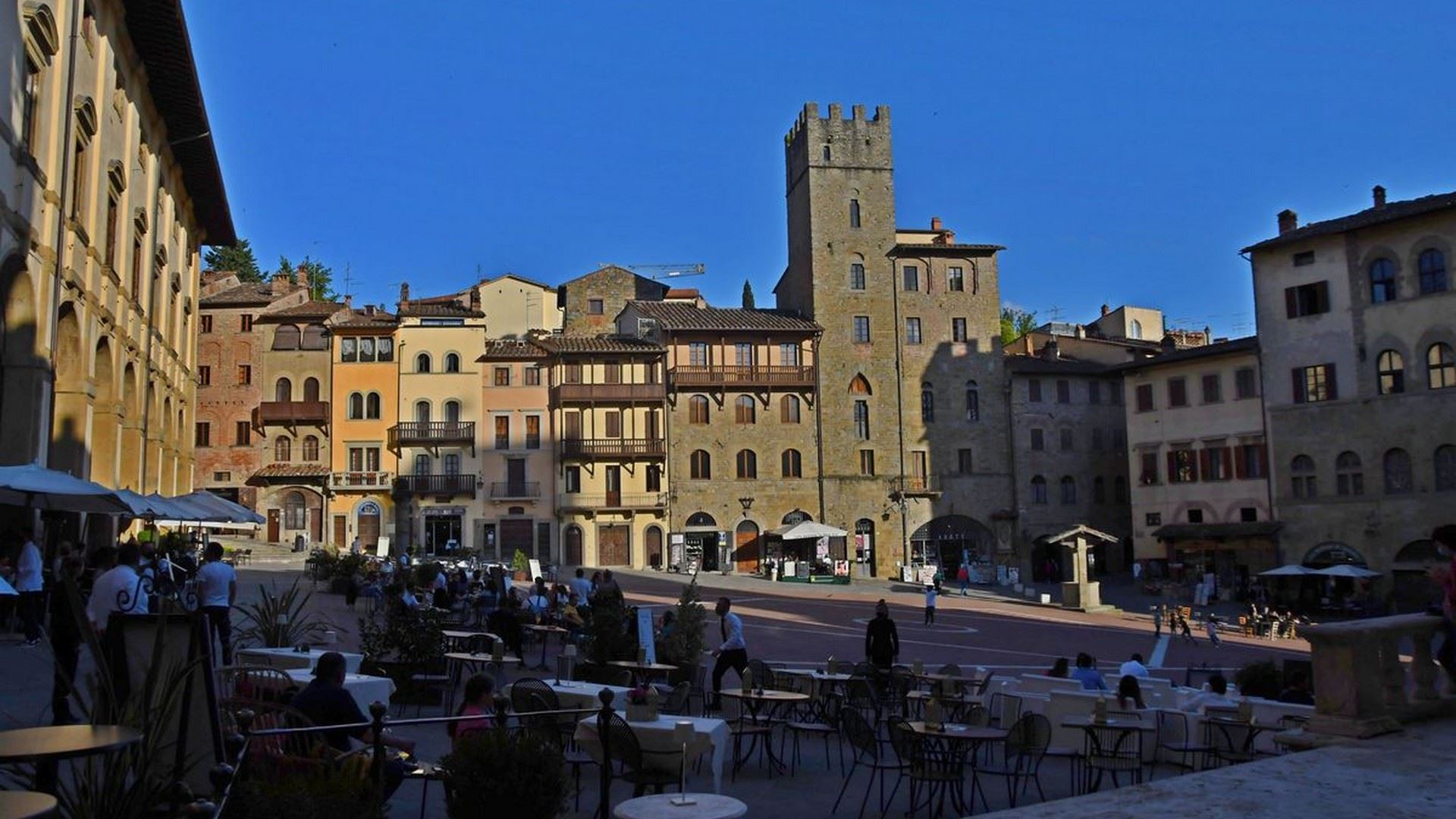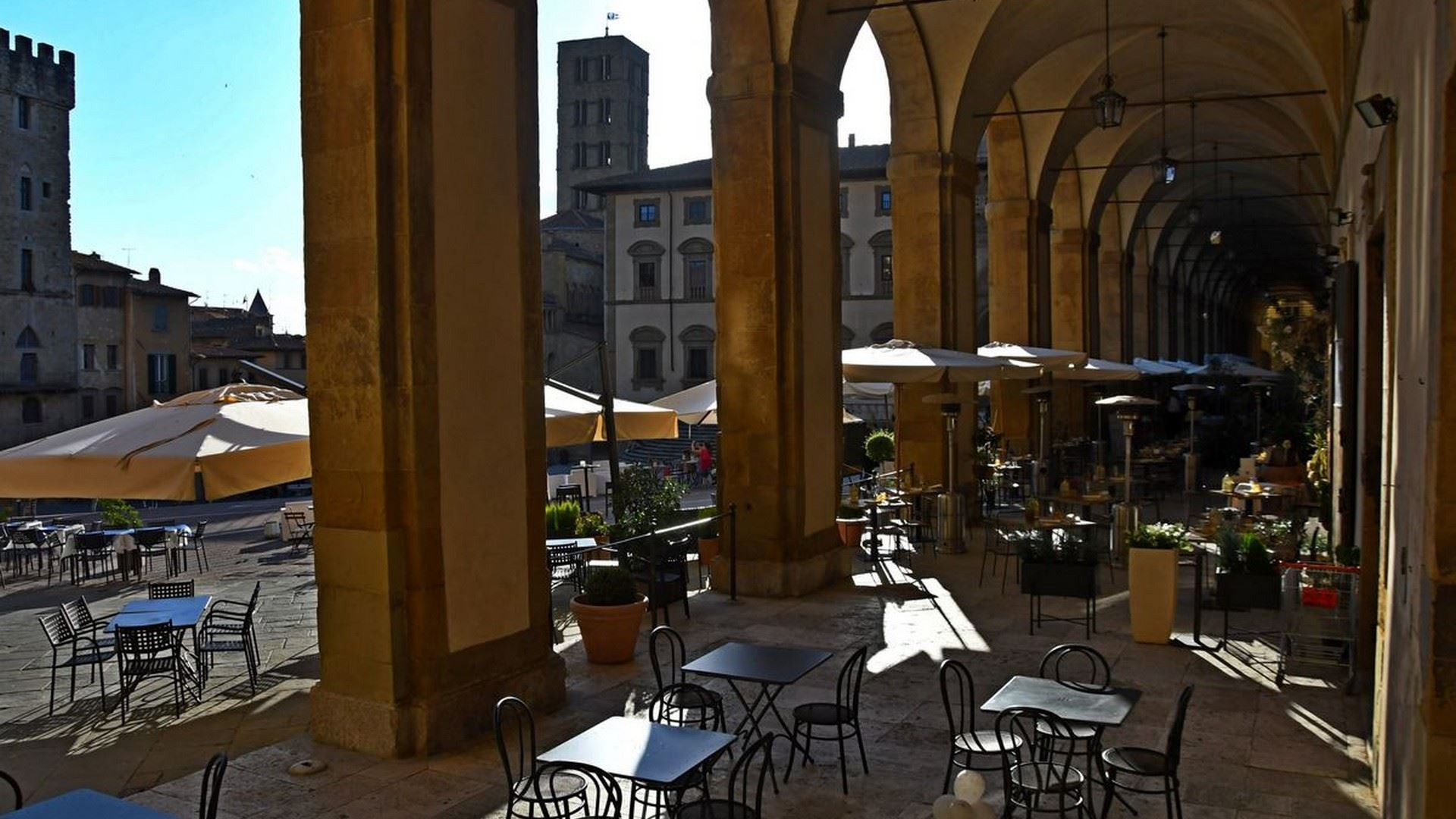Situated mid-way between Florence and Perugia, Arezzo has not sold its soul to tourism. The city abounds in monuments but tourism is mostly muted in this underrated city. In a real sense, Arezzo is a hidden gem as it has built its fortune on jewellery. Arezzo was a major town in the Etruscan federation, thanks to its strategic position on a hill at the meeting point of three valleys. Today, it’s one of Tuscany’s wealthiest cities, as witnessed by the proliferation of jewellers, goldsmiths and antique shops. The lopsided main square is a magnet for celebrations and strolls, as is the neighbouring Corso Italia. Culturally, the city belongs to Piero della Francecsa, the artist who has most left his mark on Arezzo. Medieval monuments cluster together in the northern part of Arezzo, including the Duomo, sheltered by the encircling walls of the 16th-century Fortezza, now a park with fine views.
Arezzo
-
-
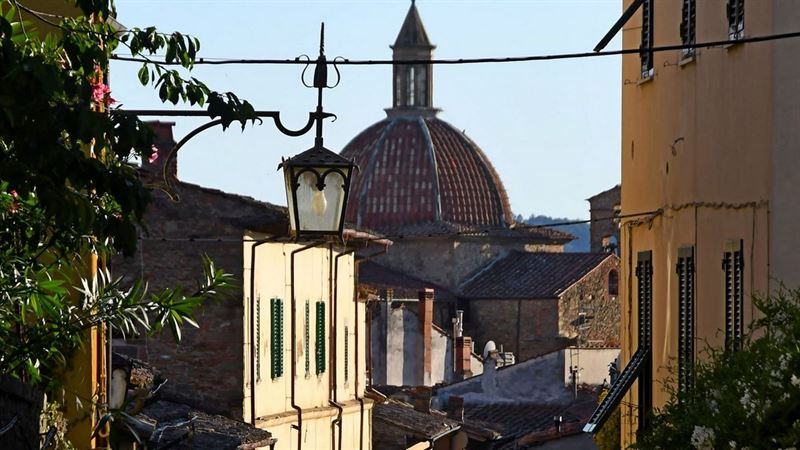
Top Ten Things to Do
Arezzo’s main attractions are its magical main square and its churches, often linked to Piero della Francesca. But the best thing to do in Arezzo is simply to appreciate life in a Tuscan city that does not define itself by tourism. Beyond Arezzo, we recommend day trips along the arty Piero della Francesca trail to Sansepolcro and Monterchi. Our other favourite trips are to hilltop Cortona and to a chic wine estate.
-

1. Piazza Grande – magical main square
This sloping central square has been at the heart of city life since medieval times. This massive main square, the Piazza Grande, is barely on an even keel and is set in the hilliest, most picturesque part of the city. It even featured in the classic film, La Vite è Bella (Life is Beautiful), starring local boy Roberto Benigni. Compared with the more touristy town of Cortona, this theatrical, café-lined square feels more peaceful, far more so than Florence. Admire the porticoes of the 16th-century Palazzo delle Logge Vasariane before retreating to a café, such as Caffe Vasari (at number 15).
The square is at its most evocative during the Giostra del Saracino, a chivalric jousting tournament held twice a year, in June and September. On the first weekend of every month, this square welcomes an antiques market, the largest of its kind in Italy. Stalls cover the square, run around the base of the Duomo, and spill into the cobbled Corso Italia, the city’s main shopping street. It’s a similar story at Christmas, when a huge Bavarian-style Christmas market moves in. In summer, the locals, known as Aretini, love their early evening strolls (passeggiate) between Corso Italia and the square.
Address: Piazza Grande, Arezzo
Web: www.visitarezzo.com -
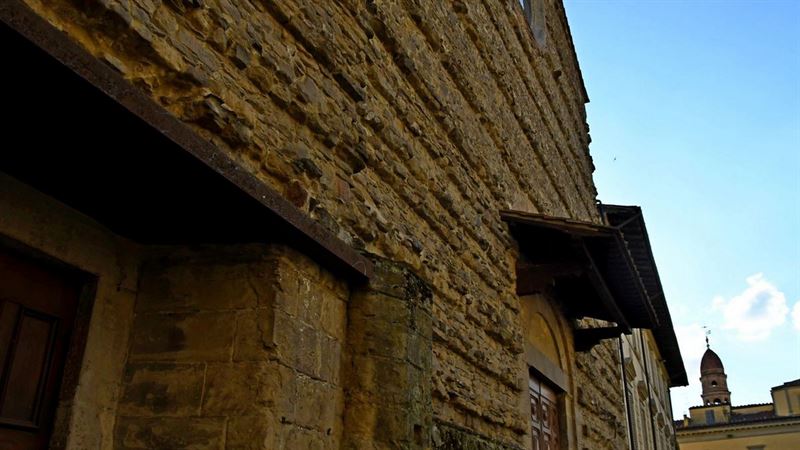
2. Basilica di San Francesco – Piero della Francesca frescoes
For art-lovers, Arezzo’s star attraction is Piero della Francesca’s painstakingly restored fresco cycle in the barnlike Basilica of San Francesco. These virtuoso works of art have survived an earthquake, lightening and an attack by Napoleonic troops. These well-preserved frescoes illustrate the Legend of the True Cross (1452–66), a complex story presented in the local artist’s haunting style. The most compelling scene in Anthony Minghella’s The English Patient was filmed here. This church is often considered the start of a spiritual trail in Piero della Francesca’s footsteps that also leads back to the artist’s home town of Sansepolcro.
One of the country’s greatest treasures is on display in the Cappella Bacci inside this cavernous church. The beguiling fresco cycle weaves together a complex story in which the wood of the Tree of Knowledge (from which Adam and Eve ate the apple) becomes the wood of the cross on which Christ died. Legend has it that it was later discovered by the Empress Helena, mother of the Emperor Constantine the Great, who converted to Christianity and made it the state religion of the Roman Empire in 313 AD. What matters more than the story is the spirituality that suffuses Piero della Francesca’s art. His frescoes have a transcendent quality that elevates his work beyond the mere mastery of perspective and space. Look for his graceful figures dressed in Renaissance gowns and framed by idealised depictions of Arezzo and Sansepolcro. (Entry is via timed-entry tickets, with the option of an audio-guide, and available as combined tickets with the Casa Vasari, Vasari’s House).
Address: Basilica di San Francesco
Via di San Francesco
Web: https://museiarezzo.it/en/frescoes-by-piero-della-francesca/ -
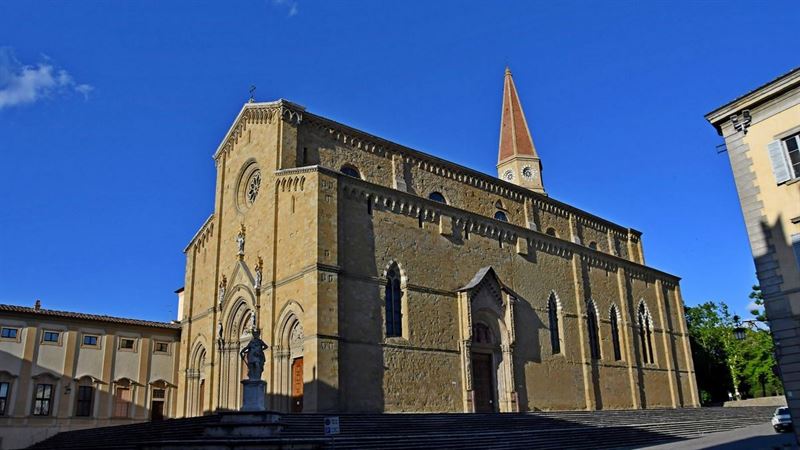
3. Duomo d'Arezzo – Arezzo Cathedral
Also known as the Duomo dei Santi Donato e Pietro, Arezzo Cathedral occupies the site of a
pre-Christian temple in the hilly, northern part of town. The lofty Duomo, dating from the late 13th century, boasts a Gothic bell-tower, but still feels stranded on its hilltop site. Inside the cathedral are fine 16th-century stained-glass windows and the Gothic tomb of Guido Tarlati, which flanks the serene St Mary Magdalene fresco by Piero della Francesca. This work can be contemplated in comparative peace, unlike the frescoes in the Basilica di San Francesco which may attract tour groups. If in the mood for more sacred art, call into the Museo Diocesano di Arte Sacra (the Museum of Sacred Art) behind the Cathedral. Inside are medieval crucifixes and Vasari frescoes salvaged from other churches in the region.
Address: Cattedrale dei Santi Donato e Pietro ad Arezzo
Piazza Del Duomo, 1, 52100 Arezzo
Web: www.visittuscany.com/en/attractions/cathedral-of-santi-donato-e-pietro-in-arezzo/ -
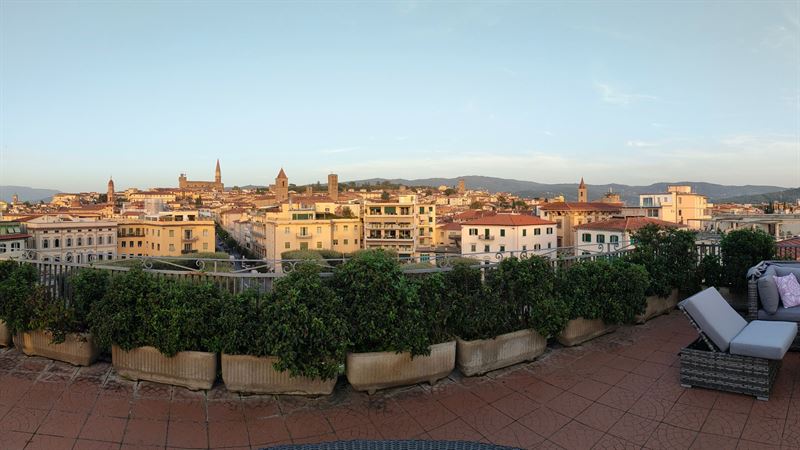
4. Museo Archeologico – Arezzo Archaeological Museum
Set fairly close to the station, in the southern section of the city, this museum overlooks the remains of a Roman amphitheatre that once welcomed around 10,000 spectators. A section of the amphitheatre walls was incorporated into a 14th-century Olivetan monastery which now houses the Archaeological Museum. The Roman Arretium was originally an Etruscan city, but in 294 BC it became a Roman settlement, a convenient resting post on the Via Cassia between Rome and Florence. The site was later plundered to build the city walls and churches, and the perimeter wall is all that remains. On display are Etruscan and Roman artefacts, including the Aretine waterproof tableware which made Arezzo’s name. Known as Arretino, this fine, red Roman pottery once competed with the more famous Samian ware as the crockery of choice on aristocratic Roman dinner tables.
Address: Archaeological Museum Gaio Cilnio Mecenate
Via Margaritone, 10
52100 Arezzo
Tel: 0575 21421
Web: museomecenate-ticketoffice.it/ -
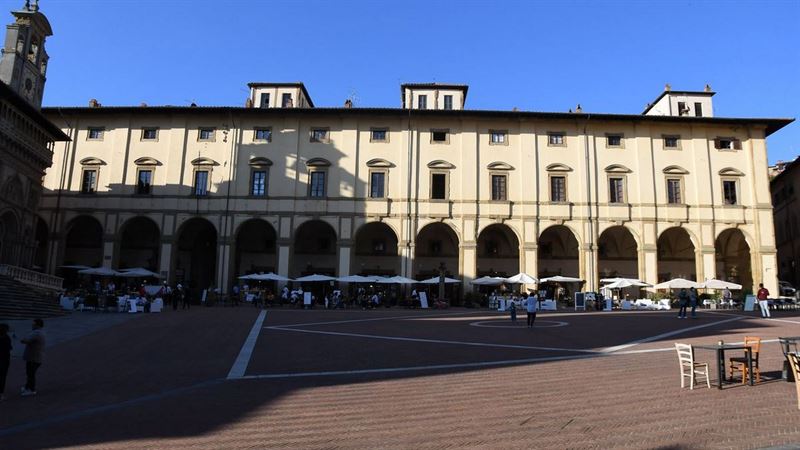
5. Museo di Casa Vasari – Vasari’s home
The Casa del Vasari is the attractive house where the Arezzo-born painter, Giorgio Vasari (1511-74) lived and worked. Vasari was not merely a Mannerist painter and architect but author of The Lives of the Artists (1550). This celebrated book, which documented the life and work of his contemporaries, and near contemporaries, is treated with reverence. Vasari is often dubbed the world’s first art historian. This home was built for Vasari and decorated with frescoes of the artists he most admired. Vasari’s home is much as he left it. The 500th anniversary of his birth was celebrated with much pomp in Arezzo in 2011, including the painstaking restoration of a Vasari altarpiece before visitors’ very eyes.
There’s a saying that Tuscany is `equally blessed by the genius of man and nature.’ History has proved the proverb, with the greatest of the region’s greats achieving worldwide fame. Vasari is just one of the greats from Arezzo. Other major local figures include Petrarch, the classical Italian poet, and Guido d’Arezzo, who invented musical notation. Then there was Maecenas, the Roman patron of the arts who encouraged the work of Virgil and Horace. To continue the Vasari trail, visit the neighbouring Museo Statale d’Arte Medioevale e Moderna, housed in the 15th-century Palazzo Bruni. The collection features frescoes and examples of the Arezzo goldsmiths’ work, alongside paintings by Vasari and modern works by local artists.
Address: Casa Vasari
Via XX Settembre, 55
52100 Arezzo
Tel: +39 0575 354449
Web: www.giorgiovasari-ticketoffice.it/en/ -

6. Chiesa di Santa Maria della Pieve – Romanesque church
Churches are never far from mind in Arezzo but they are often strikingly different, as here. Spiritual duties await in one of the loveliest Romanesque churches in Tuscany. Rising from the southern side of Piazza Grande, the main square, sitting on the Corso, is the Santa Maria della Pieve. This is Arezzo’s most ancient church, and revels in its arcaded façade and elaborately carved columns. The church boasts a so-called `tower of a hundred holes,’ named because of the filigree pattern of arches piercing the belfry. As in San Gimignano, the lofty tower has been likened to a medieval skyscraper. Inside, the star attraction is Pietro Lorenzetti’s panel-painting, Madonna and Saints, painted in the 1320s.
Address: Corso Italia 7, Arezzo
Web: https://www.visitarezzo.com/it/vedere-pieve-di-santa-maria-arezzo -
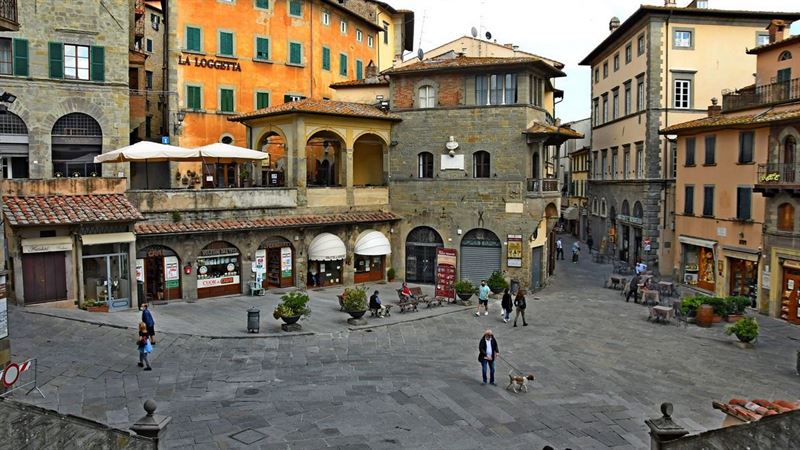
7. Day out in Cortona
Cortona is a charming town located in the Valdichiana, around 30 km south of Arezzo. Set high above the Valdichiana plain, Cortona surveys terraced slopes of olive groves and vineyards. This perfect medieval town is deservedly popular but brave the summer crowds for some of the loveliest views in Tuscany. Set on a rocky spur 600 metres above sea level, Cortona climbs upto a Medici fortress and views of both Lake Trasimeno and Monte Amiata. The city, enclosed by stone walls dating to Etruscan and Roman times, was the most important Etruscan city in the north of Tuscany.
Learn more about this charming town in our Cortona travel guide.
-
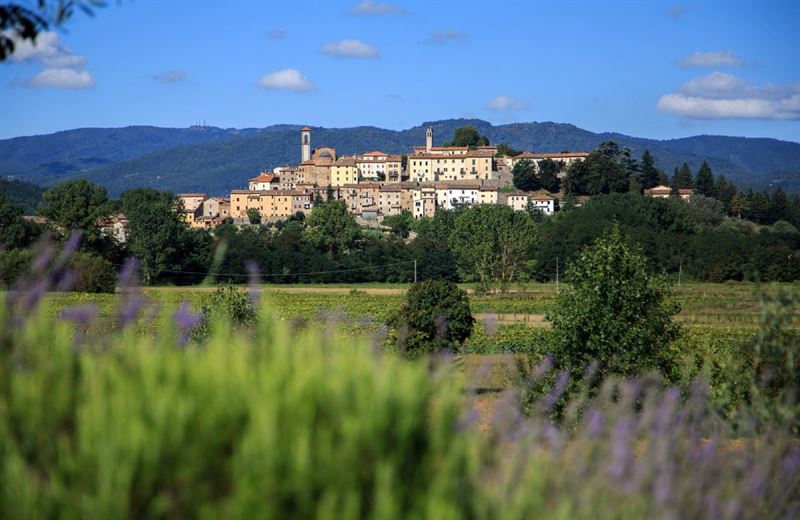
8. Monterchi art trail
From Arezzo, the Piero della Francesca trail proceeds 25 km east to tiny Monterchi, on the border with Umbria. Here, a former schoolhouse displays the artist’s striking Madonna del Parto, the Pregnant Madonna. Recently, Arezzo fought with Monterchi to display the masterpiece but the battle was won by Monterchi.
The Madonna, heavily pregnant and aching, has unbuttoned the front of her dress, while above, two angels hold up the entrance to the tent in which she stands. The story is that in 1459 Piero della Francesca came back to Monterchi to pay homage to his mother, who came from the village. After working in Urbino for the Dukes of Montefeltro, this poetic Renaissance artist spent his last years in Sansepolcro. Fittingly, this revolutionary artist died there on October 12th 1492, the day the New World was discovered. (From Monterchi, you can continue on to Sansepolcro or return directly to Arezzo).
Address: Museo della Madonna del Parto, Via della Reglia 1, Monterchi
Web: www.madonnadelparto.it -
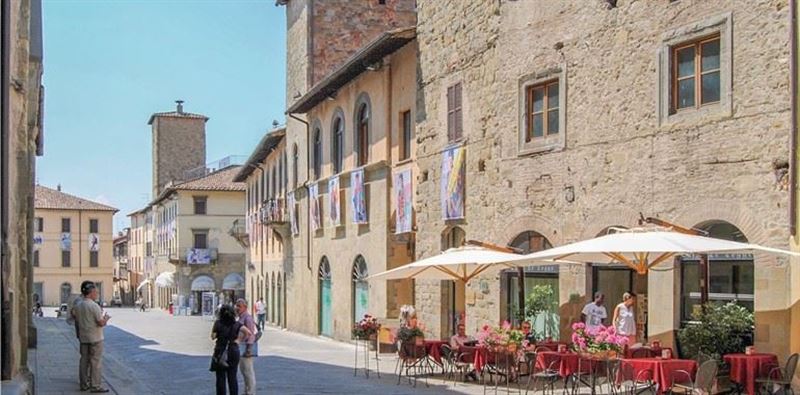
9. Sansepolcro & Piero della Francesca trail
Art fans will be tempted to follow the Piero della Francesca trail to Sansepolcro, in the Upper Tiber valley, on the border with Umbria. The only decision is whether to combine the trip with a stop at Monterchi. From Arezzo, it’s a pretty 41 km drive northwards to Sansepolcro, via a patchwork of pasturelands and beechwoods. Sansepolcro is famous for two things: as the town where Buitoni pasta is produced and as the birthplace of the great Renaissance artist.
For art-lovers this is a pilgrimage to see Piero della Francesca’s greatest work, The Resurrection. The fresco, created in 1463, was hailed by Aldous Huxley as “the best picture in the world.” It was nearly destroyed by the Allies during World War II as they bombarded Sansepolcro, believing the Germans were still occupying the town. Thankfully, it was saved from destruction by the villagers, who surrounded the artwork with sandbags. Today, this intense, brooding work is displayed in the Museo Civico, alongside the Madonna della Misericordia, another della Francesca masterpiece.
Sansepolcro, huddled behind crumbling ramparts, is framed by four ancient gateways. The medieval town has much to recommend it beyond the Piero della Francesca masterpiece. The Duomo, which started out as an 11th-century abbey church, displays Perugino’s Ascension of Jesus and works by the della Robbia school. Apart from the well-preserved city gateway of Porta Fiorentina, admire the mansions, strung out along on Via Matteotti, the 16th-century Palazzo delle Laudi (Town Hall) and the Gothic Palazzo Gherardi.
Address: Via Niccolò Addinti, 65
52307, Sansepolcro
Arezzo, Italy
Tel: +39 0575732218
Web: http://www.museocivicosansepolcro.it/ -

10. Il Borro – lunch and wine-tasting on chic wine estate
Set in the hills 20km from Arezzo, Il Borro is part of a patchwork of cypresses, sunflowers, olive groves and vineyards that inspired Leonardo da Vinci. More prosaically, Il Borro is in the middle of nowhere in the Arno Valley, a place of ancient forests, rolling hills and clear streams. Come for a wine-tasting and lunch on this chic estate owned by the Ferragamo fashion dynasty. The setting often features in fashion shoots but the Ferragamo family are serious restaurateurs and wine producers. According to Salvatore Ferragamo, “The wines are trail-blazing Super-Tuscans rather than traditional Chianti Classico.” Dine in L’Osteria Il Borro, the gourmet restaurant, with a completely open kitchen overlooking the countryside. On the menu are rabbit, snails and scallops, plus pasta with lamb ragout, spinach and ricotta. Beneath it is the Tuscan Bistro, for informal meals, or Il Vincafe, set in a converted carpenter’s workshop, for a light tasting menu of cold cuts, carpaccio and salads.
Address: Localita il Borro 1, -52024 San Giustino V.No Arezzo
Tel: +39 055 977053
Web: www.ilborro.it -
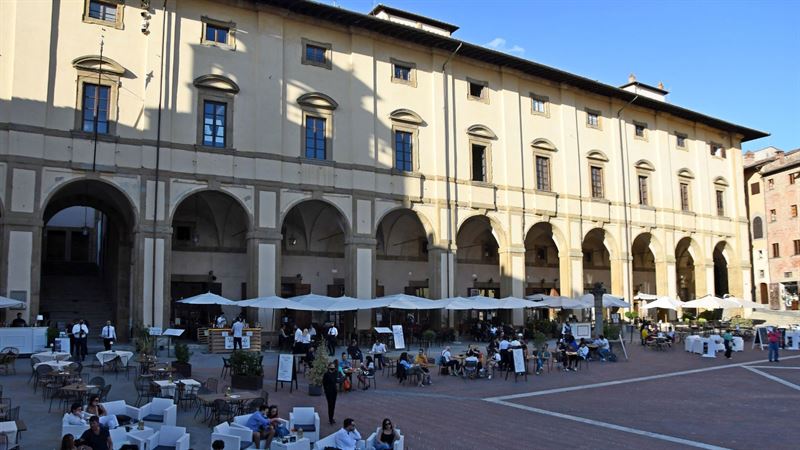
Eating & Drinking
Local cuisine from Arezzo is highly recommended, with a great range of both traditional and modern Tuscan cuisine. At the rustic end, expect a hearty version of classic Tuscan cuisine, with inns serving salami, cheese platters, stuffed pasta or a filling ribollita soup (made with beans). Also expect porchetta (whole deboned pigs, stuffed with garlic and herbs), succulent sausages and cold cuts. Homely inns might serve tripe and grifi con polenta, lambs’ cheeks with polenta, or dishes based on veal, pork or venison. Also look out for bistecca alla fiorentina, chargrilled T-bone steak, especially as neighbouring Val di Chiana is considered the best place for steak in Tuscany.
Arezzo is the capital of a significant wine-producing province, and offers everything from local Chianti (Chianti Colli Arentini DOCG) to Vinsanto (Vinsanto del Chianti Colli Arentini DOC). In addition, a number of estates, such as Il Borro, produce SuperTuscans, including those inspired by French models. To know more, follow the local Wine Route, the Strada del Vino. The 200-km-long Terre di Arezzo route takes in over 120 wine estates. -
Antica Osteria L’Agania
Set within the Old Town pedestrianised area, this timeless, traditional Tuscan inn is ever-popular. The clock seems to have stopped in the 1950s. This family-run retro inn serves up trusty, homely Tuscan fare, including the Chianina, Tuscan steak. You can’t go wrong with the `antipasto misto’ (mixed appetisers), or with mushrooms or wild asparagus. Game is a house speciality, including wild boar stew served with pici, the local short, stubby pasta. Meals are decently-priced.
Address: Via Giuseppe Mazzini 10, Arezzo
Tel: +39 0575 29.53.81
Web: www.agania.it -
Antica Vineria dell’Agania
This cosy, unpretentious wine bar is run by the same family who own Antica Osteria L’Agania. The concept is clear: to offer excellent regional wines and well-priced platters of Tuscan cured meats and cheeses - all served in a rustic wine bar setting. The wines are mostly from Arezzo Province, backed up by wines from Chianti and Siena. In season, there are truffles, too.
Address: Via Giuseppe Mazzini 14, Arezzo
Tel: +39 0575 30.02.05
Web: www.agania.it -
La Lancia d’Oro
Tucked into a lovely loggia on the main square, the setting is as appealing as the elegant restaurant itself. In summer you can dine al fresco. Dishes are Italian and Tuscan classics but with a Modern Tuscan touch. On the menu might be T-bone Tuscan steak, or pici pasta in duck sauce, or courgette-stuffed ravioli with courgette flowers in a creamy pecorino and creamy saffron sauce. Prices are from mid-price upwards but still value for money.
Address: Piazza Grande, 18
52100 Arezzo
Tel: +39 0575 21033
Web: https://ristorantelanciadoro.it/ -
La Torre di Gnicche
Set just off the northern corner of the main square, this cosy wine bar and inn is a popular choice for a cheap and cheerful meal, such as a hearty ribollita soup, onion soup, roast pork, or a cheese platter. Or simply choose crostini accompanied by a glass of wine from a long list of well-chosen local selections. This spot is popular with both the market crowd and the antique-dealing fraternity.
Address: Piaggia San Martino, 8 52100 Arezzo (AR)
Tel: 0575352035
Web: www.latorredignicche.it -
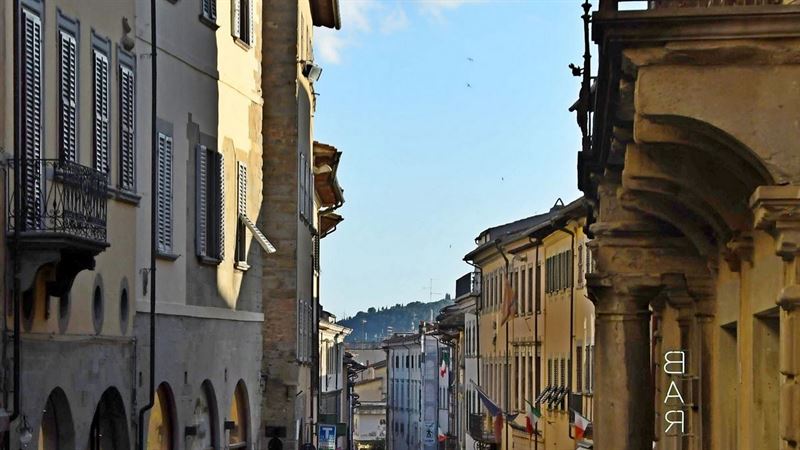
Shopping
Arezzo has a commercial soul so shopping is definitely on the agenda, even if it’s only about browsing the markets. Be tempted by the jewellery shops on Corso Italia before lingering over a leisurely lunch around Piazza Grande. The glut of jewellers and goldsmiths has made Arezzo rich. On the first weekend of every month, this square welcomes an antiques market, the largest of its kind in Italy. Browse for art déco knick-knacks, jewellery, clocks, books, antiquarian prints and paintings, musical instruments and vintage clothing. Not to mention vintage signs or pulpits ripped out of Neapolitan churches.
-
Villa La Ripa - wine estate outside Arezzo
Known as gracious hosts, the Luzzi family offer wine-tasting and much more on their estate, centred on a Renaissance villa. Saverio Luzzi, the doctor-winemaker owner, is passionate about the estate’s history and wine, including Psyco, a ruby-red blend of Sangiovese and Cabernet Sauvignon. Run by doctors, the Luzzi family also makes cosmetics and skin-care products, which are created by Claudia Luzzi, the pharmacist daughter: “Vines, grapes, seeds and wine contain antioxidants, anti-ageing and soothing substances which help maintain beautiful skin,” explains Luzzi. The wine and oil can be shipped abroad; best to book a wine-tasting tour (including of the villa).
Address: Villa La Ripa Srl
Località Antria, 38
52100 Arezzo
Italy
Tel: (+39) 335 1003351
Web: www.villalaripa.it -
Busatti
Since 1842 Busatti have been manufacturing quality fabrics and are known for their natural fibres and designs inspired by the Renaissance. This family-run firm uses old-fashioned shuttle-looms to weave finely-decorated fabrics. Florentine Renaissance motifs are reproduced on anything from tablecloths to tea towels, napkins and oven mitts. The firm is based in Anghiari but have a shop in Arezzo.
Address: Via Mazzini, 14
52031 Anghiari (AR) Italy
Tel: +39 0575 788013
Web: www.busatti.com -
Parking
Arezzo, like most Tuscan towns, operates a strict ZTL system, a Limited Traffic Zone. This means that the Centro Storico (historic centre) is essentially closed to traffic, particularly for non-residents.
Pietri Parcheggio/Parking Pietri is probably the most convenient. From the motorway, follow directions to “Bibbiena” until you see signs for Pietri Parcheggio/Parking Pietri. Both paying and free parking is available, and you are close to the escalators which take you directly to the Historic Centre at the top of the hill.
Mecenate is a multi-storey car park open 24 hours a day.
Viale Piero della Francesca is parking close to the train station.
Web: www.visitarezzo.com/trovare-parcheggi-auto-arezzo/gratuito-pagamento-autobus
Advice on ZTLs: You may see other cars crossing the ZTL boundary (Limited Traffic Zone) and assume you can proceed. Not so. The drivers crossing into the ZTL zone will probably be locals and have residents’ permits. Visitors do not so are liable to fines. Zones are monitored by cameras, so tickets are issued immediately and automatically, as soon as (and each time) the car crosses the ZTL boundary.
-
Getting there & getting around
To explore this area properly, especially if planning to visit the Casentino, a car is definitely advisable. By car, from the Florence-Rome motorway, take the Arezzo exit and drive a further 10 km to the city centre. Cortona is about 29 km distant, with Florence 74 km away and Siena 89 km distant.
Regular bus services connect Arezzo with Cortona and other towns in Arezzo province, as well as with Siena and Florence. Even so, much of this part of eastern Tuscany is ill-served by buses, even if there is a bus from Arezzo to Sansepolcro.
Arezzo train station is at the southern end of town, and operates regular services to Florence, Perugia and Cortona (around 45 minutes). The train to Cortona actually runs to Camucia, but from there a 15-minute shuttle-bus ride takes visitors to Cortona’s historic centre.









